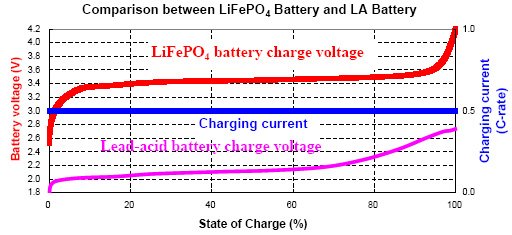

The table shows the formulae of some common transition metal ions. The number in the name of the compound shows the charge of the metal ions in that compound.įor example, copper(II) sulfate contains Cu 2+ ions. Transition metals (in the central block between groups 2 and 3) can have ions with different charges. Elements in the same group form ions with the same charge. Just follow the above guidelines.The charge of many ions can be worked out using patterns in the periodic table. Getting 500 charge/discharge cycles from a lithium-ion battery is not unheard of. Lithium-ion batteries are a huge improvement over previous types of batteries. Storing lithium-ion batteries at 40 percent discharge and in the refrigerator (not freezer) is recommended Final thoughts That means oxidation of lithium-ion is at its highest rate. I know now that it’s because I was storing the battery fully charged. I’ve always had an extra battery for my notebook, but it would never last as long as the original battery. 5: For extended storage, discharge a lithium-ion battery to about 40 percent and store it in a cool place

Only battery analyzers with the boost function have a chance of recharging the battery.Īlso, for safety reasons, do not recharge deeply discharged lithium-ion batteries if they have been stored in that condition for several months. If a lithium-ion battery is discharged below 2.5 volts per cell, a safety circuit built into the battery opens and the battery appears to be dead. 4: Avoid completely discharging lithium-ion batteries So let the battery discharge to the cut-off point and then recharge. Continuous partial discharges create a condition called digital memory, decreasing the accuracy of the device’s power gauge. Battery experts suggest that after 30 charges, you should allow lithium-ion batteries to almost completely discharge. In fact, it’s better for the battery to use partial-discharge cycles. That means deep-discharge cycles are not required. Unlike NiCad batteries, lithium-ion batteries do not have a charge memory.
#AT IRON CHARGE FULL#
3: Allow partial discharges and avoid full ones (usually) Make sure to ask for ones with the most recent manufacturing date. It’s important to remember the aging characteristic when purchasing batteries. So a spare battery won’t last much longer than the one in use.

2: Think about getting a high-capacity lithium-ion battery, rather than carrying a spareīatteries deteriorate over time, whether they’re being used or not. Heat is by far the largest factor when it comes to reducing lithium-ion battery life. So don’t leave or charge your mobile device’s battery in your car if it’s hot out. The worst thing that can happen to a lithium-ion battery is to have a full charge and be subjected to elevated temperatures. 1: Keep your batteries at room temperature Here are a few ways to keep your lithium-ion batteries healthy. Doing so allows the battery to operate efficiently.
#AT IRON CHARGE HOW TO#
What’s not well known is how to care for the battery itself. It doesn’t take long to learn what helps preserve the current charge on the battery. It can get downright nasty when two spot the only available outlet at the same time. If you don’t believe me, go to an airport and watch the road warriors. In today’s mobile world, battery life is precious. For more info, visit our Terms of Use page. This may influence how and where their products appear on our site, but vendors cannot pay to influence the content of our reviews. We may be compensated by vendors who appear on this page through methods such as affiliate links or sponsored partnerships. Here are a few things you can do to increase battery longevity. There's lots of press about how to conserve battery power, but not much about how to take care of your batteries. Five tips for extending lithium-ion battery life


 0 kommentar(er)
0 kommentar(er)
